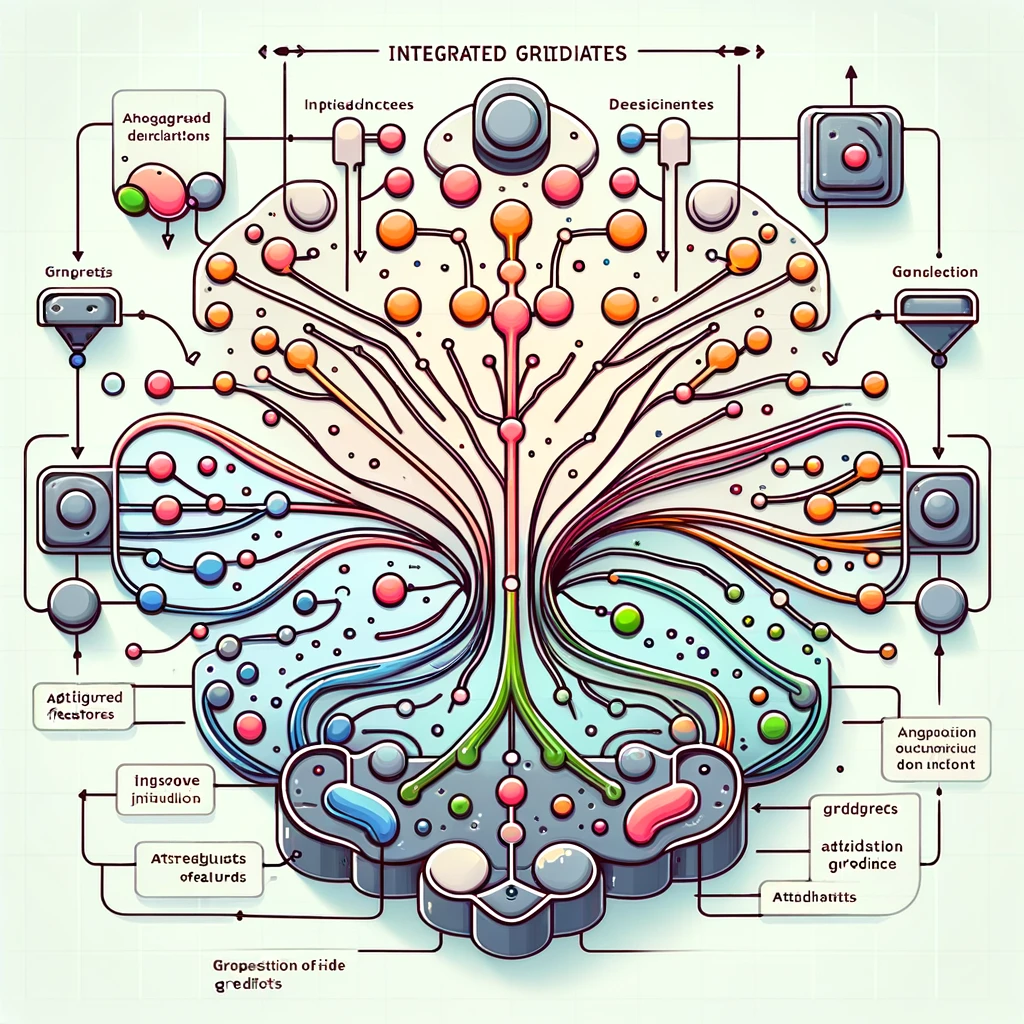
09. June 2024
Integrated gradients
Interpreting black box of deep neural networks
Introduction
In the realm of artificial intelligence and machine learning, interpretability has become an essential aspect, especially for deep learning models, which often operate as black boxes. Integrated Gradients is one of the prominent methods developed to address the need for interpretability.
What are Integrated Gradients?
Integrated gradients is a technique for attributing the prediction of a neural network to its input features. It is designed to be used with differentiable models, particularly neural networks, to understand how each input feature contributes to the output prediction. The method was proposed by Mukund Sundararajan, Ankur Taly and Qiqi Yan in their 2017 paper, "Axiomatic Attribution for Deep Networks".
The Concept Behind Integrated Gradients
Integrated gradients aims to attribute a model's prediction to its input features in a way that satisfies certain axioms. These axioms include:
✔ Sensitivity
If an input feature changes and this change alters the prediction, the attribution should reflect this change.
✔ Implementation Invariance
Two models that are functionally equivalent should produce the same attributions for the same input.
To achieve these goals, integrated gradients computes the integral of gradients of the model’s output with respect to the input along a straight path from a baseline input to the actual input.
Methodology
The methodology of integrated gradients can be broken down into the following steps:
Baseline Selection
The choice of baseline input is crucial for the effectiveness of integrated gradients. The baseline is typically a neutral input such as a zero vector or an input where all features are set to their mean or median values. Selecting an appropriate baseline can significantly influence the resulting attributions, making it an important consideration in the application of this method.
Path Integration
Consider a straight-line path from the baseline to the input. Mathematically, this can be represented as:
\[ x' = \alpha x + (1 - \alpha) x_{\text{baseline}}, \alpha \in [0, 1] \] where \(x\) is the actual input and \(x_{\text{baseline}}\) is the baseline input.Gradient Computation
For each point along the path defined by the above equation, the gradient of the model's output with respect to the input is computed. These gradients provide insights into how sensitive the model's output is to changes in each input feature at different points along the path.
Integral Calculation
Integrate these gradients over the interval from 0 to 1. The integrated gradient for each input feature \(i\) is given by:
\[ IG_i(x) = (x_i - x_{\text{baseline},i}) \int_{0}^{1} \frac{\partial F(x'(\alpha))}{\partial x_i} d\alpha \] where \(F\) is the model's output function. This integral essentially accumulates the contributions of each input feature to the model's output along the specified path.
Computational Considerations
Efficiency
While the concept of Integrated Gradients is theoretically sound, the actual computation can be resource-intensive, especially for models with a large number of parameters. Efficient computation techniques, such as numerical integration and sampling methods, are often employed to make this process feasible.
Numerical Integration
Numerical integration techniques like the trapezoidal rule or Simpson's rule can be used to approximate the integral. These methods involve discretizing the path into a finite number of steps and summing the gradients at these points to estimate the total integral.
Sampling Methods
In practice, a common approach is to sample points along the path rather than compute the gradient continuously. For example, one might choose \(m\) evenly spaced points along the path from \(\alpha=0\) to \(\alpha=1\) and compute the gradient at these points. The integral is then approximated by averaging these gradients and scaling by the input difference:
\[ IG_i(x) \approx (x_i - x_{\text{baseline},i}) / m \sum_{j=1}^{m} \frac{\partial F(x'(\alpha_j))}{\partial x_i} \] where \(\alpha_j\) are the sampled points along the path.
Practical Implementation
✔ Libraries and Tools
Several machine learning libraries provide implementations of integrated gradients, making it easier to apply this technique in practice. For example:
TensorFlow
The TensorFlow library includes a module for computing integrated gradients.
Captum
An interpretability library for PyTorch, Captum provides a comprehensive implementation of integrated gradients along with other attribution methods.
✔ Use Cases
Integrated gradients can be used in various scenarios, such as:
Feature Importance
Understanding which features are most influential in the model's predictions.
Model Debugging
Identifying and correcting issues related to model behavior and biases.
Transparency
Providing insights into model decisions for stakeholders who require interpretability.
By integrating these specific technique elements, you can leverage integrated gradients to enhance the interpretability of deep learning models effectively.
Advantages and Limitations
✔ Advantages
Theoretical Soundness
Integrated gradients is grounded in well-defined axioms, providing a robust theoretical basis for attribution.
Implementation Invariance Ensures consistent attributions across different implementations of the same model.
✔ Limitations:
Baseline Dependence
The choice of baseline can significantly affect the attributions.
Computational Cost
Calculating the integral can be computationally expensive, especially for large models.
References
- (Article) Axiomatic Attribution for Deep Networks, Mukund Sundararajan, Ankur Taly, Qiqi Yan | Website
- (Article) Enhanced Integrated Gradients: improving interpretability of deep learning models using splicing codes as a case study, Jha, A., K. Aicher, J., R. Gazzara | Website
- (Article) Guided Integrated Gradients: an Adaptive Path Method for Removing Noise, A. Kapishnikov, S. Venugopalan, B. Avci, B. Wedin, M. Terry and T. Bolukbasi | Website
- (Article) A Rigorous Study of Integrated Gradients Method and Extensions to Internal Neuron Attributions, Daniel Lundstrom, Tianjian Huang, Meisam Razaviyayn | Website
